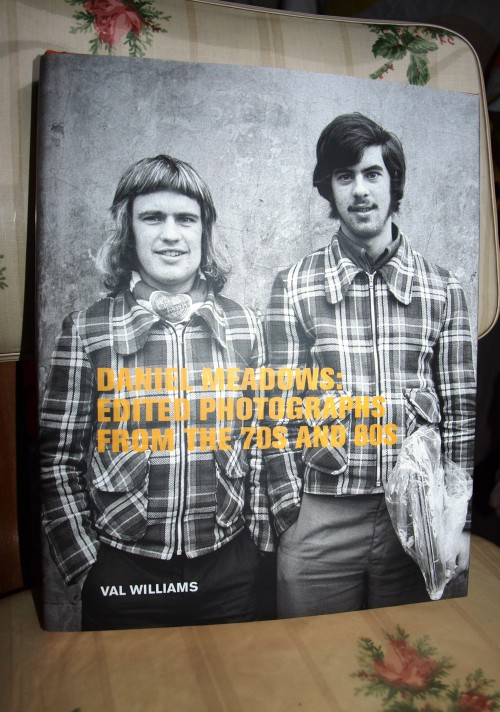Guest post by Maria Spadafora
If you haven’t yet experienced Daniel Meadows’ exhibition in Gallery Two at National Media Museum, Bradford, you have until 19th February – and I heartily recommend it.
Daniel Meadows is an inspirational documentarist. Essentially a ‘posh boy’, what he describes as a cruel time at boarding school led to him despising his own class, battling teachers and being ‘punished’ with long periods in the art room, the naughty step of its day. Thanks to this he ended up studying photography at Manchester Poly and, alongside the likes of Martin Parr, heading up a new, explorative movement that took photography into new directions in the early 1970s.
His passion for real people and stories is paramount, and makes this exhibition very special. His images of ordinary, working class people and their homes are striking in their contrast to the fashion magazines of the time, which tell a very different story. The images of June Street, a collaboration with Martin Parr, show that living rooms on your typical terraced street did not look like a contemporary Habitat catalogue, but a cobbling together of 30s sofas, 50s curtains and brass ornaments, with pairs of tights drying in front of a coal fire.
Taking inspiration from Cliff Richard in Summer Holiday (seriously!), Meadows developed an ingenious project called the Free Photographic Omnibus. Turning an old double decker into a mobile darkroom and living space, he drove around England for 14 months taking portraits of people on their own streets. He really engages with people and let’s them speak for themselves, rather than taking a pose, point and press approach.
Meadows says that media had previously been ‘something that happened to you’ and today champions the democracy of new technology which enables us to capture and record our own stories, in our own voices – storytelling from the bottom up rather than the top down. Significantly, he also taped many of his subjects, capturing the characters, stories, and accents of places travelled. Some of these stories can be found on short films in the exhibition, but also on his website http://www.photobus.co.uk
There’s a lot to smile at in this exhibition too, particularly the gaudiness captured in the colour photographs of a Butlins resort, and the fashions and hairdos of the time. But ultimately it captures a time in history, and the ordinary really is extraordinary.
